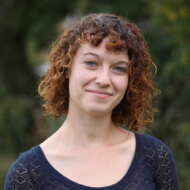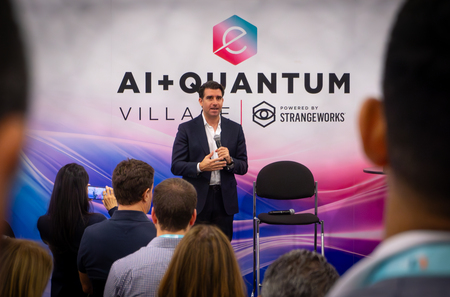
Quantum Physics in commercial media has a challenge. While science fiction writers may have a difficult task to convey aspects of quantum physics to their readers, this problem becomes even more difficult in the world of film and television. For movie directors, the process of explaining abstract concepts of quantum physics or quantum technology is daunting, as they only have a certain time limit to do so. According to Dr. Lisa Yaszek, Regents Professor of Science Fiction Studies at Georgia Tech: “Hollywood directors are constrained by a range of factors including the limited number of words in the average script, the standard two- hour length of the feature film, and the twin facts that they rarely have full control over their products but need to make money by appealing to a wide range of audiences. Given these constraints, it’s no surprise that science fiction films tend to prioritize the human drama provoked by emergent technologies over the science behind them.” This means that for many quantum technologies, they are misrepresented, or even occasionally completely wrong. This lack of accuracy becomes important when looking at how the general public views quantum technology, especially the commercialization and implementation of quantum technology.
As technological advancements accelerate through our greater understanding and use of quantum physics, society’s perspective will have an influence on the commercial success of the related businesses. It will be interesting to see how society embraces the technologies formed from this exciting science, especially given the years of confusing and inaccurate information from film and television. Over the years of films, quantum technology has had its successes and failures at being accurately described. It’s important to understand how films became successes or failures in explaining the science of quantum physics. Now of course many of the films where quantum physics is portrayed inaccurately are clearly fictitious works, and there isn’t a strict need for scientific accuracy. However, viewers, when wanting to understand more, should be aware that these films are pure fiction and not factual. Two specific examples are discussed below, both being blockbuster movies within both the action and science fiction genres: Tenet and Interstellar.
Inaccuracy in inversion: Tenet
Tenet, the newest blockbuster film by director Christopher Nolan is mind-bending and discusses the idea of time travel through time inversion. After the movie’s release, the L.A. Times had theoretical physicist, Claudia De Rham from Imperial college London, explain the science of the film. De Rham stated: “for me, it was a little bit too much of the science fiction being an excuse for action and setting scenes… It’s far less grounded in physics. There are a lot of times where they use science jargon and it’s just jargon with no content.” In the process of making Tenet, Nolan consulted physicist Nobel laureate Kip Thorne. Thorne also advised Interstellar. In the end, it appears Nolan used little of Thorne’s advice, deciding to make the film less scientifically accurate. While Tenet is based on scientific understanding, there is little to glean for accuracy. That doesn’t mean it isn’t an entertaining and clearly popular movie. But viewers should be aware when watching movies like Tenet, that the science is clearly film-making magic and not realistic technology.
Another example of inaccurate quantum physics in film is the 2014 movie Transcendence starring Johnny Depp. While Nolan decided to purposefully move away from science, Transcendence director Wally Pfister made up his own science entirely. In Transcendence, a man’s brain gets uploaded into a quantum computer, with the predictable consequences inevitably following. This film’s science is so obviously inaccurate that anyone should be able to realize this is clear science fiction and that in understanding true quantum physics, expert opinions should be sought.
Puzzling Time-travel: Interstellar
In another popular Christopher Nolan film that won several awards, Interstellar discusses time travel via time dilation. This film was also made using the help of Thorne. In an interview with Wired Magazine , Thorne commented: “In our first conversation, we discussed moving forward and backward in time and the fact that physicists don’t yet know for sure what the laws of physics allow and forbid. So, Chris came up with his own rule set, and I came up with a way to fit it into what we physicists do think we know.” From this collaboration came an award-winning movie that accurately relays the puzzling nature of quantum physics and quantum technology. Viewers can relate well to the frustration of trying to solve abstract concepts in quantum physics that physicists have been trying to solve for decades.
Keep Rolling: the Next Steps
While quantum technology continues to be showcased both accurately and inaccurately in big Hollywood movies, it also has sprouted other ideas within film. One of these is the Quantum Shorts film festival hosted by the Centre for Quantum Technologies out of Singapore. This festival highlights short films made by individuals about quantum physics. Dr. Yaszek stated that: “independent filmmakers such as these are more like authors than Hollywood directors in terms of control over their artistic products and the ability to balance or even foreground ideas over action. At the same time, they have access to the film maker’s toolkit, and, like their Hollywood counterparts, can use visual and aural elements to convey what might otherwise be extremely abstract concepts to a wide range of audiences.” Short films can fit a variety of genres as well, compared to large Blockbuster movies that have strict genre guidelines. This can make quantum physics portrayal easier for a filmmaker. No matter where films are being shown, it is clear that quantum physics and quantum technology isn’t leaving the silver screen anytime soon.
References
Carafano, James. n.d. “Computers Gone Wild—6 Movies to Help You Ponder Our Quantum Future.” The Heritage Foundation. Accessed June 21, 2021. https://www.heritage.org/technology/commentary/computers-gone-wild-6-movies-help-you-ponder-our-quantum-future.
“Interstellar Almost Had 6 Wormholes and 5 Black Holes.” n.d. Wired. Accessed June 21, 2021. http://wired.com/2014/11/metaphysics-of-interstellar/.
Moser, Molly. 2019. “Quantum Hits the Silver Screen.” Osa-Opn.org. Optics & Photonics News. June 12, 2019. https://www.osa-opn.org/home/newsroom/2019/june/quantum_hits_the_silver_screen/.
“Quantum Shorts.” n.d. Quantum Shorts. Accessed June 21, 2021. https://shorts.quantumlah.org/home.
Zemler, Emily. 2020“How Real Is the Science in Christopher Nolan’s ‘Tenet’? We Asked an Expert.” Los Angeles Times. September 4, 2020. https://www.latimes.com/entertainment-arts/movies/story/2020-09-04/science-christopher-nolan-tenet-physicist-interview.
Interviews:
Dr. Lisa Yaszek of Georgia Tech
Photo Credit of Pixabay.com






















